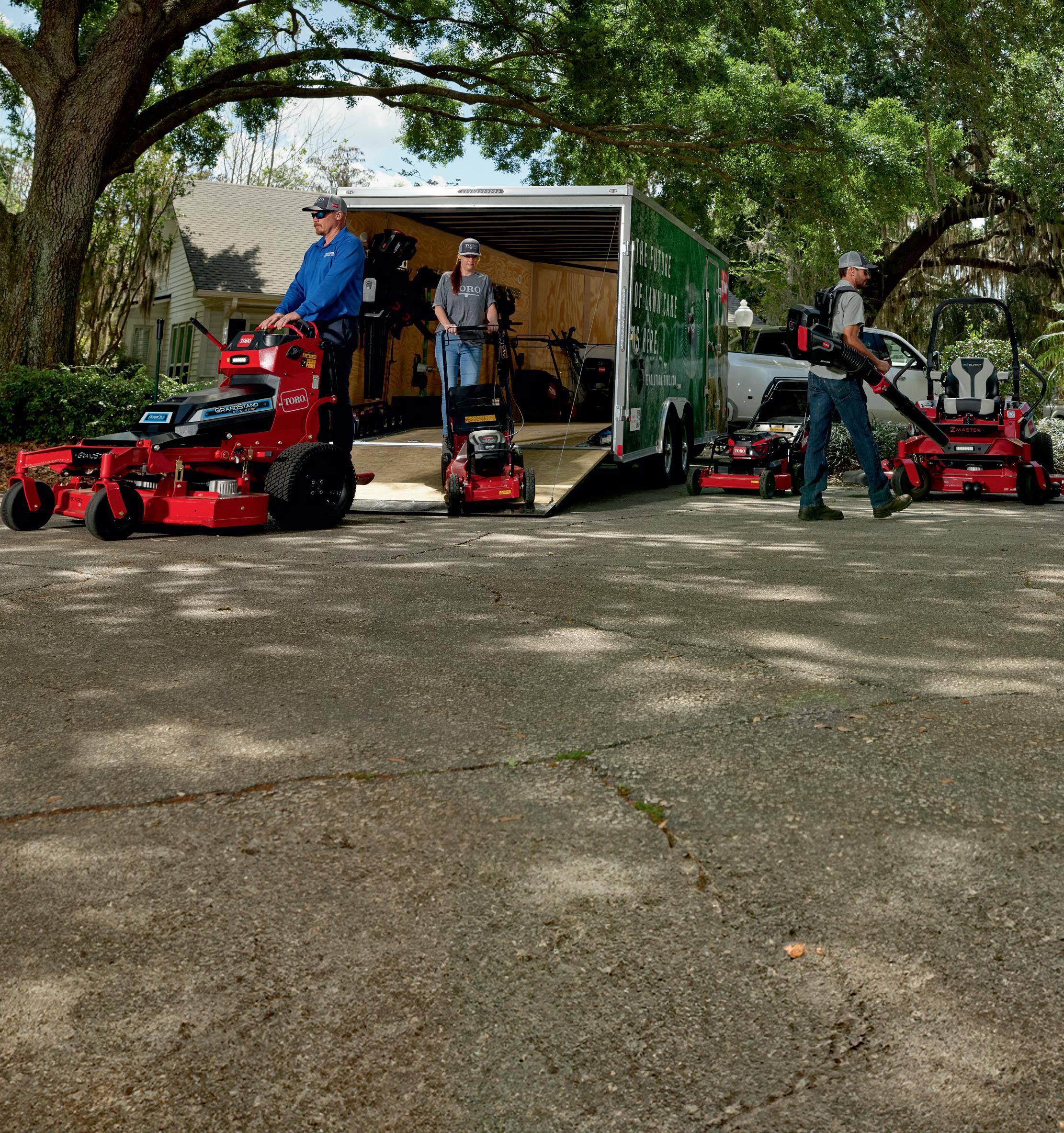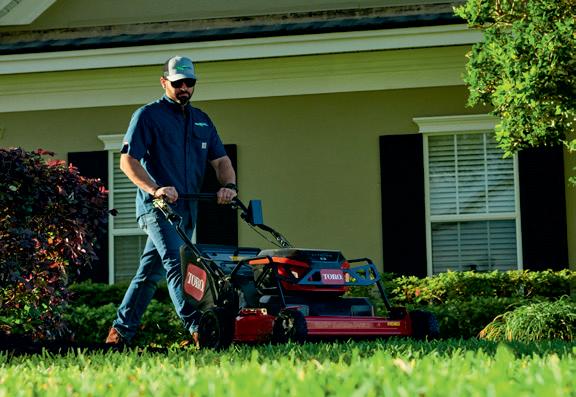P. 24 THE LATEST HARDSCAPE + LIGHTING TRENDS































Our Para Latinos initiative is all about boosting the careers of Latino landscape pros. This year, we're rolling out several can't-miss events in cities like Houston on May 18th, Ft. Lauderdale on July 19th, Elizabeth, NJ on September 14th, and Inglewood, CA on November 9th. These events are perfect for sharpening skills in everything from hardscaping to outdoor lighting and keeping crews happy and productive. Each event features a comprehensive day of classes led by engaging speakers from the landscape industry, ranging from manufacturers to consultants. Every session is conducted in both English and Spanish.
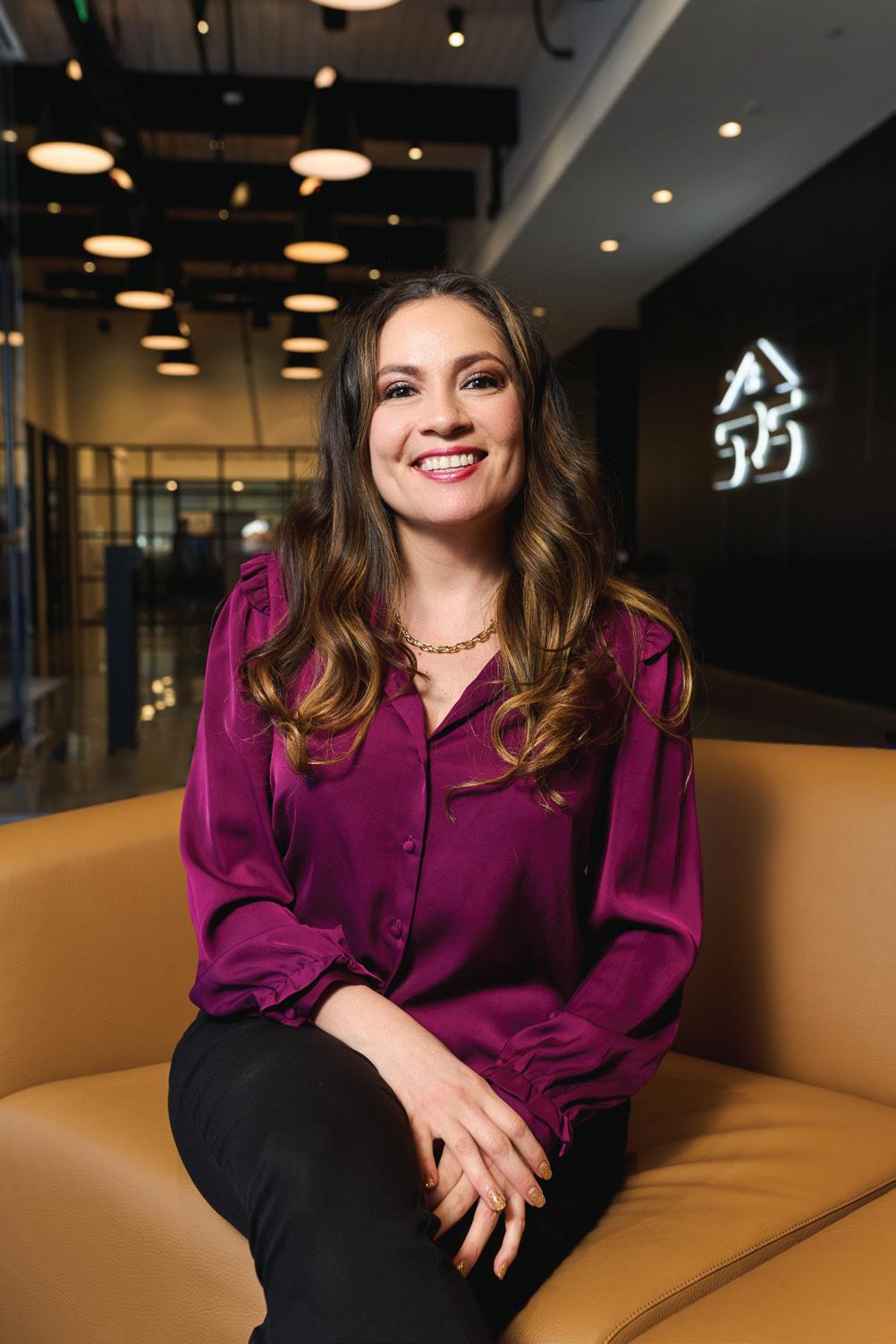
And it's all led by two dynamic women, Julissa Chavez and Brenda Corral. With Julissa's marketing genius and Brenda's operational expertise leading the way, every event promises

Julissa brings over 8 years of expertise in marketing and sales roles within SRS Distribution Inc., currently serving as the Marketing Director. She is adept at driving growth in the Latino customer segment, enhancing digital sales adoption, and orchestrating successful customer engagement events. Recognized for outstanding contributions, including a proven track record of driving strategic initiatives, fostering engagement, and achieving significant business results within the dynamic landscape of SRS Distribution Inc. Julissa Chavez will lead the Latino market strategy to the Heritage Family of Companies starting in 2024.
Brenda is a seasoned professional with over 4 years of experience in marketing, sales, and operations. Currently serving as the Program Manager for Latino Marketing and Sales at SRS Distribution Inc., she drives strategic initiatives and business growth. With a strong track record in roles such as Territory Manager and Operations Manager, Brenda excels in exceeding targets and delivering exceptional results. Passionate about driving impact and fostering growth, she is committed to creating lasting value in every endeavor.

Want to learn more about the Para Latino Initiative? Use the QR code to get in touch with our team and follow us to see upcoming events!

This year’s Women In The Green Industry Award winners reveal how they’ve succeeded in the industry, their advice for other women and more.
A look at one landscape company’s tactics to
and
A compilation of this spring’s top
and diseases and how lawn care operators can identify them.
Manufacturers weigh in on the pros and cons of
and stand-on machines and how contractors can choose between the two.
Insight into the latest hardscape and lighting trends and how design-build pros can incorporate them.
Snow equipment manufacturers provide their input on what snow professionals should ask before purchasing equipment.

It’s that time of year where Green Industry Pros honors female leaders in the green industry with the Women In The Green Industry Award.
For the first time, Green Industry Pros broke down the award winners into three categories:
Up and Comer: Honors female professionals under 35 years of age who have made significant strides in the industry.
Unsung Hero: Honors an employee who always puts her nose to the grindstone but who may not always get the recognition she deserves.
We divided the categories this way because we wanted to recognize a wider variety of women leaders in the industry.
After all, it’s not required to be a company owner or to have spent decades in the industry to be a leader.


Seasoned Pro: Honors female professionals who have been in the industry 20-plus years and who have made significant strides in promoting other women in the green industry.

Splitting up the categories also meant that I had the opportunity to garner the perspectives of multiple winners. From those conversations, a few pieces of advice stood out:
• Find your support group
• Always continue to learn and better yourself.
• Don’t let anyone tell you that you can’t do something.
You can find that full story on p. 6. You can also find stories about the ins and outs of electric compact equipment (p. 14); how to attract and retain more workers to your business (p. 16); disease and weed identification (p. 18); hardscape and lighting trends (p. 24); and much more.
What about you? Do you know any strong female leaders within the industry? What qualities do they possess? What advice would they give? What do you think could be done to attract more women to the industry?
I’d love to hear your thoughts— and I’m sure your fellow readers would, too. Email your ideas to swebb@iron.markets or connect with me on LinkedIn by following the QR code below.
EDITORIAL
Editor Sarah Webb swebb@Iron.Markets
AUDIENCE
Audience Development Manager Angela Franks
PRODUCTION
Senior Production Manager ..............................Cindy Rusch crusch@Iron.Markets
Art Director Willard Kill
A
Brand Director Jason DeSarle jdesarle@Iron.Markets
Sales Representative................................. James Protopapa jprotopapa@Iron.Markets
IRONMARKETS
Chief Executive Officer Ron Spink
Chief Revenue Officer Amy Schwandt VP, Finance Greta Teter VP, Audience Development Ronda Hughes VP, Operations & IT Nick Raether VP, Demand Generation & Education Jim Bagan
Corporate Director of Sales ............................ Jason DeSarle
Brand Director, Construction, OEM & IRONPROS Sean Dunphy
Content Director Marina Mayer Director, Online & Marketing Services .... Bethany Chambers Director, Event Content & Programming Jess Lombardo
CIRCULATION & SUBSCRIPTIONS
P.O. Box 3605 Northbrook, IL 60065-3605 (877) 201-3915 | Fax: (847) 291-4816 circ.greenindustrypros@omeda.com
LIST RENTAL
Sr. Account Manager Bart Piccirillo | Data Axle (518)339-4511 | bart.piccirillo@infogroup.com
REPRINTS & LICENSING
Brand Director Jason DeSarle jdesarle@Iron.Markets
Until next time! https://gpros.co/SarahWebb




Would you like to stay up to date on the latest news across the green industry but can’t wait for the next print issue of Green Industry Pros magazine to come out? Be sure to subscribe to our e-newsletters— including The Pro Report, The Tech Report and The Lawn Care Report, just to name a few—using the QR code, so you can stay informed on what’s going on around the industry.
https://gpros.co/y668u

@Kaleb.stock.adobe.com
You may have participated in this year’s Mower Madness tournament on our social media channels. If you haven’t, the annual competition allows Green Industry Pros’ social media audience to decide on their favorite mower for the year. The competition coincides with the NCAA’s March Madness tournament each year, so be sure to check back next year to see if your favorite mower made the cut. This year, Bobcat Co.’s ZT5000 zero-turn took home the crown. Follow the QR code to the left to learn more about this year’s tournament and find out how you can follow along next year. https://gpros.co/eqgx7y5h


To stay up to date on the latest happenings around the green industry, be sure to follow Green Industry Pros’ social media channels: Green Industry Pros

The recipients of this year’s Women In The Green Industry Award are all-around winners.
Women who win isn’t just a catchy title; it’s an embodiment of this year’s Women In The Green Industry Award winners.
These women have won many achievements, both personally and professionally; they’ve won the respect of others within the industry; and this year, they’ve won the title of Women In The Green Industry honoree.
For the first time, Green Industry Pros broke down the award winners into three categories:
• Up-and-Comer: Honors female professionals under 35 years of age who have made significant strides in the industry.
• Unsung Hero: Honors an employee who always puts her nose to the grindstone but who may not always get the recognition she deserves.
• Seasoned Pro: Honors female professionals who have been in the industry 20-plus years and who have made significant strides in promoting other women in the green industry.
With this division into categories, Green Industry Pros aims to recognize a wider variety of women leaders in the industry. The women listed below have become champions of and for the green industry, helping to create a winning industry overall. Without further ado, here are this year’s winners.
From
the beginning, Deborah Munoz-Chacon wanted her company to do
things differently from a lot of the other companies operating in Tucson. Here’s how she accomplished just that over the last two decades.
Deborah Munoz-Chacon, owner and president of Sonoran Oasis Landscaping and this year’s overall winner of the Women In The Green Industry Award, has run her own landscaping company for nearly two decades.
Her biggest differentiator when she started proved to be that she was a solely female-owned company.
“Most of my competitors are owned by men, and my husband doesn’t work in the business with me,” Munoz-Chacon says.
“I make all of the major decisions. I wanted to do things differently because I’m not like the men in the industry.”
Her flourishing company began to take root years many years ago when she discovered the landscape industry by chance working for a management company that included a landscape division.
Munoz-Chacon’s 10 years of dedication learning the industry at the company paid off when, after the owner decided to sell,

Munoz-Chacon decided to start her own business.
“I knew I didn’t want to do management at that company, but I really enjoyed the landscaping part of it and working with plants and clients in the landscape business,” MunozChacon says.
From there, Sonoran Oasis Landscaping came to be in 2005.
From the beginning, Munoz-Chacon wanted her company to do things differently from other companies in Tucson.
“I love the Sonoran Desert—it’s so unique with the cacti and saguaros, and you have to deal with the heat in the summertime,” Munoz-Chacon says. “I started the company with the intent of managing the plant material properly, using water-saving irrigation systems and native desert plant material. Also, instead of coming in as a technician, I came from the business end of it, so that gave me an advantage and helped us make it as long as we have.”
She notes that at the time she started the company, companies in her area were using Mediterranean plant material, which guzzled up a lot more water.
So, she got educated on that side of the business, taking classes at the University of Arizona and Pima Community College to learn how to do landscaping properly.
When she started the business, everyone told Munoz-Chacon that she would be lucky if she made it five years because the field was so competitive. With nearly two decades in business, she proved them wrong.
“We compete against very large companies as well as two

guys in a truck,” Munoz-Chacon says, adding that Sonoran Oasis Landscaping typically runs two to three crews a day.
“We’re definitely smaller, but we compete with our larger competitors.”

Nay-sayers weren’t the only challenge Munoz-Chacon has combatted throughout her tenure. When she first started in the business, many prospective clients would ask where her husband was.
“That was a hurdle because a lot of the women who I knew in the industry ran the office, while their husband was running the field,” Munoz-Chacon says. “I’ve always done both.”
As the years wore on, she says many of those challenges have faded as clients and prospectives recognize her as the owner off the company.
In addition to several awards for the landscapes the company has created, Munoz-Chacon says another major highlight in her career was completing her MBA.
“That was a huge accomplishment for myself, and it helps me with running the business because of everything I’ve learned from that,” Munoz-Chacon says.
Despite focusing heavily on the business side of things, Munoz-Chacon says one of her favorite parts is to go plant and see the finished project. She says she also loves to teach employees and help them make the landscapes their own.
“I really like to see when others grow and are able to do things that they didn’t know how to do when they came to work with us,” Munoz-Chacon says.
In addition to giving back her time to mentor employees, Munoz-Chacon also spends a lot of time giving back to the industry. She’s served on a committee for the Southern Arizona Horticulture Conference, participated on the City of Tucson’s Landscape Advisory Committee and held a board member position on the National Association of Women Business Owners in the Tucson area.
“There are just so many ways to be involved in the industry,” Munoz-Chacon says. “If you’re a woman who wants to get into the industry, there are different ways to do it. Find a way that works for you. Don’t let anyone tell you that you can’t do it. If you do that, you can be very successful, and you can grow a business and have something that you’re proud of.”
While Munoz-Chacon says she’s accomplished many of the goals that she’s set for herself, she’s always aiming to improve the company.
“I want to leave my business to my son and daughter-in-law as a legacy, so it’s important I help them ramp up what they’re doing and that we work together closely,” Munoz-Chacon says. “It’s always my goal to grow the company, but to have it small enough that we are still a part of the company and that I still know my clients and my employees.”

How Nicolette McCary went from oceanography student to sales and marketing guru to owner of a sustainability-focused landscape firm. Here’s the story behind the 2024 Women In The Green Industry Up-and-Comer Award winner.
Oceanography student. Published researcher. Marketing firm owner. Head of sales at a popular media company. Owner of a sustainability-driven landscape company. Youngest board member and marketing committee chair of the Washington Association of Landscape Professionals.
Nicolette McCary has donned many hats during her professional career. And recently, the owner of Seattle Sustainable Landscapes added one more to the lineup: Women In The Green Industry Up-And-Comer Award winner.
“I’m very grateful to be nominated, especially as an up-andcomer, because that feels like exactly where I’m at,” McCary says. “I have a lot of experience in the sciences and in sales, but landscaping is a new industry to me. I learned so much in those other jobs that has translated directly to what I’m doing now. All of it is making this company thrive.”
Growing up on the Puget Sound, McCary always explored the beach and looked at everything through a scientific lens. In college, she majored in biological oceanography and is a twice-published researcher. Her studies surrounded how humans impact the nearshore environment with runoff pollutants.
“As often happens right after college, I ended up not using (my degree) completely and ended up in marketing and sales in e-commerce and retail, but I really wanted to get back,” McCary says. “My husband and I wanted to own a company and be more entrepreneurial, and I wanted something I could use my background and research to be part of the solution
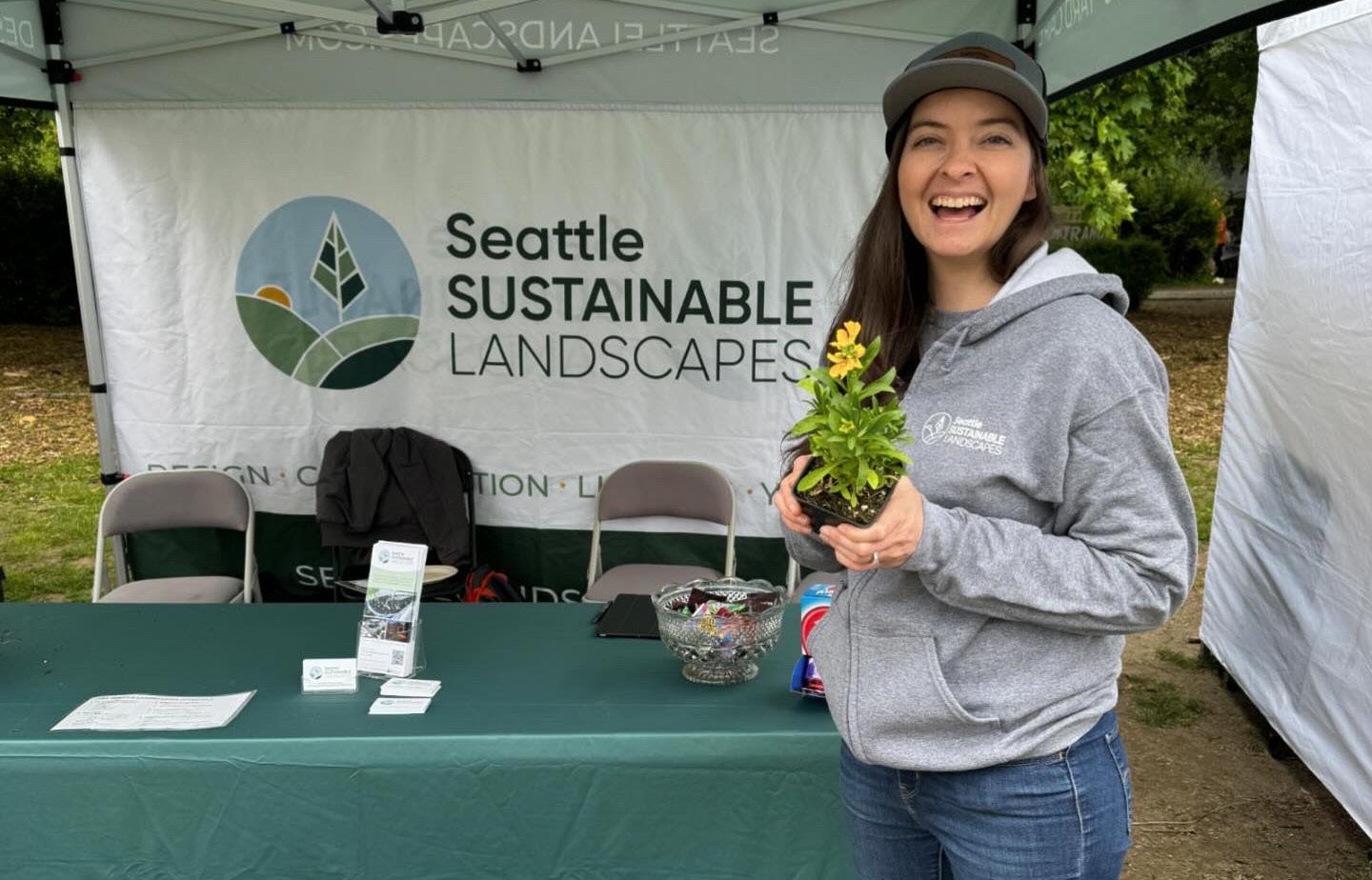
rather than part of the problem.”
The answer: a landscape firm specializing in sustainability.
McCary and her husband David McCary purchased an existing company in October 2022 under the name of Seattle Sustainable Landscapes, but it is a new business entity under McCary Landscapes on the back end. Since then, the duo has grown the company by 1.5 times and is on track to hit $2 million in annual revenue for 2024.
“Everything we do to make someone’s backyard beautiful with a redesign or with care is focused on doing things that are sustainable for the homeowner and that’s helpful for their family, their dogs and the environment,” McCary says.
When the McCarys originally purchased the company in 2022, McCary was running the operations on the back end while still working at her other job. Understanding that working two full-time jobs was not sustainable, she devoted herself full time to Seattle Sustainable Landscapes. As the majority owner of the company, McCary serves as head of marketing, HR and sales rep and oversees three managers.
“Our newer managers have settled into their roles, taking so much work off my plate,” McCary says. “I now serve as an overlay across the divisions to ensure projects are completed on time and that none of our employees are overwhelmed.”
While McCary acknowledges that women still face challenges within the industry, she notes that more often than not, her clients are very open to working with a woman.
However, if she were to do anything in her career over again, she would have had more confidence in her skills and increased her pricing, especially when she worked as a freelancer.
Moving into the future, McCary strives to get the company to be a well-oiled machine, with processes in place and all employees happy, well paid and confident in their work.
“We’re not looking to become a large conglomerate. We want to have a beautifully processed company that can serve clients well and add more green to the industry,” McCary says.
On the personal side, she’s looking forward to starting a family.
“I want to be able to find a healthy way to run a company and run it well and also be able to have a family,” McCary says.



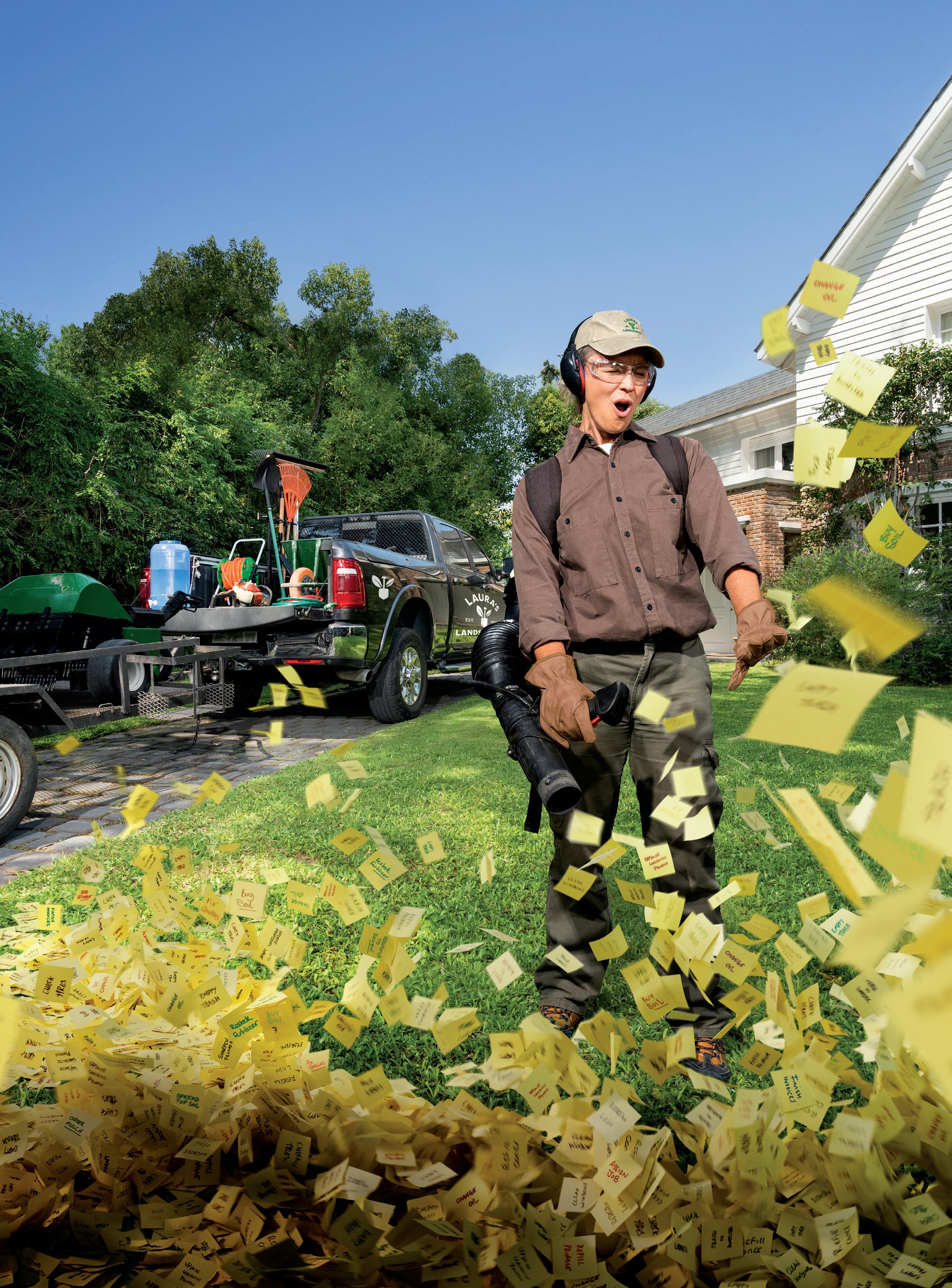


A true unsung hero, Cindy Schwab’s career highlights include those moments when she’s used her voice to uplift others in the industry. Here’s the story of how she does so.
Cindy Schwab, RC Operations Talent Manager at The Davey Tree Expert Co., started in the green industry when she was 15 years old working as a garden center cashier. With a fascination for the plant world, she pursued an education at the University of Wisconsin Stevens Point, where she earned degrees in urban forestry and parks and recreation. She later attained an MBA from National Lewis University Schwab worked as a technician, and after that, she transitioned into sales within the arboriculture industry. Schwab had also managed at two landscape companies, Grow Rite and Poul’s Landscaping. An ISA Certified Arborist, Schwab eventually started as a recruiter at Davey before being promoted to recruiting manager for the West and Midwest.
“The allure of joining a larger organization was compelling for two main reasons: the vast array of opportunities on offer and the extensive knowledge to be acquired from a varied team,” Schwab says.
At Davey, Schwab takes the time to mentor other women in the company and is involved in several initiatives both inside and outside of Davey, making her the winner of this year’s Unsung Hero Award.
“I couldn’t feel more honored to be chosen,” Schwab says. “To be a woman in the green industry means breaking barriers, fostering inclusivity, leading by example and creating a more diverse and dynamic industry to help move ahead.”
In true unsung hero fashion, when asked about her biggest highlights within her career, Schwab says it’s the opportunities

she’s had to lift others in the industry up.
Schwab doesn’t just talk the talk by using her voice to give others one—she also walks the walk. Her community engagements and industry contributions include: The Green of Detroit and Chicago Openlands; Chicago Urban Forestry Council; Wisconsin Arborist Association; and The Tour des Trees, a significant event benefiting the TREE Fund. In 2022, Schwab embarked on a challenging 440-mile bike ride across western Iowa and Nebraska, as part of a team representing Davey.
Another large focus of Schwab’s, since she’s been at Davey, has been to further the company’s justice, equity, diversity and inclusion initiatives.
“My absolute favorite part of the green industry is that it’s such a diverse group of people who share a passion for the natural world,” Schwab says. “However, we need increased representation and more diverse voices at all levels.”
She adds that the industry could also use more cultural competency training that educates those in the industry on the value of diversity and more outreach initiatives.
Having been in the industry for decades, Schwab admits that for the majority of her career, she didn’t have any women colleagues.
“It made it really hard to discuss my challenges from not having correctly fitting uniforms to the mental exhaustion from constantly feeling different from everyone else,” Schwab says. “One of the ways I have overcome this challenge is to find really solid allies. The other thing that has helped me is finding my voice and speaking up for others.”
Looking back, she says she would’ve spoken up sooner about inequities faced by individuals from underrecognized groups.
“I feared I would be considered a problem if I did, but as I become older and when I became a mom, I realized that I wanted to work for an industry that I could be proud of for my daughter and that I didn’t want her to face the same challenges that I went through,” Schwab says.
However, Schwab found that the more she used her voice, the more she was supported by others.
“I’m not saying we’ve overcome the problems in the industry, but we’re gaining momentum and allies every day,” Schwab says.“There’s still a lot of work to be done and a lot of voices to be heard. We need to create a bigger table and have more seats at that table.”

At 16 years old, Jennifer Lemcke viewed the green industry as a way to earn pocket change. Here’s the story of how all of that changed and how Lemcke eventually rose to the position of CEO of Weed Man-Mosquito Hero.
When Jennifer Lemcke, CEO of Weed Man-Mosquito Hero, first started doing odd jobs for her father, Roger Mongeon, who bought and operated a Weed Man franchise in 1986, she mostly thought of it as a means to earn some extra pocket change.
After attending college at the University of Ottawa, meeting her husband Chris and working in telecommunications at the University of Ottawa, her father approached her and Chris about joining the company.
Their answer: Yes.
“I grew up in it in my teen years before going to university and saw how hard my dad worked and how committed he was to growing the business but also the franchise,” Lemcke says. “I never thought I would be (in the industry), but I certainly fell into it.”
When Chris and Jennifer joined Weed Man and took over the Ottawa branch in Ontario, the company’s book of business came in at $216,000.
Within the first year, the pair doubled that, and within six years, they grew the company to $2 million, building a great team along the way.
“When we did this, we were young, in our early 20s,” Lemcke says. “After our first year, I gave birth to our first child, and we have three beautiful children now, so in those starting years, while we were trying to make things happen, starting a family and starting a business, we were running a million miles a

minute. As a small (business) entrepreneur, I lived and breathed and did every position in the company, and my husband did, too.”
From there, the team started to buy multiple franchises across Canada, and in 1999, Jennifer embarked on a very big project of getting everyone set up on the same computer system, which brought her to Toronto.

It was in that timeframe that Mongeon (her dad) approached her and asked if she would consider getting involved in the U.S. franchising side of the business and leading Turf Holdings, Weed Man’s U.S. franchisor.
“I really fell into my own at that time. I got to work with incredible people to help them build wealth through franchising and teach and work alongside employees to understand our processes, procedures, business planning and training program,” Lemcke says. “The success that we’ve had in the U.S. and the camaraderie and the family atmosphere that we’ve been able to create has been quite remarkable. With our franchisees, I can honestly say, I love the people I work with.”
Fast-forward to 2018, Weed Man founder’s wife, Brenda Rice, retired and sold the worldwide rights to Turf Holdings. The company now has more than 350 franchisees across North America.
Similar to the growth of the early days—but on a much larger scale—Weed Man expanded again. Turf Holdings helped grow Weed Man worldwide from $173 million in system sales in 2018 to more than $350 million this year.
“I would say that the start of my career, the midpoint with the acquisitions and master rights in the U.S. and being able to take what we built in the U.S. back to Canada was a huge accomplishment,” Lemcke says.
Outside of her company, Lemcke also does a lot of work to grow and better the industry as a whole.
Including speaking engagements for various associations and
serving on multiple committees for the National Association of Landscape Professionals, Lemcke has done her share to elevate the industry throughout her career.
However, the Weed Man CEO’s career has not been without challenges. For one, she says traveling as much as she did took a toll, especially when her kids were younger.
“There were times when I was out of the house more than I was in the house, so the guilt that comes along with that was significant,” Lemcke says.
She credits her husband and a nanny for helping to fill in any gaps while she was away.
“My goal was to never miss the big stuff, but it hurt to miss the little stuff,” Lemcke says. “Thank God for technology; I was able to Skype in at the end of the day and be present, and between Chris and the nanny, we brought up our kids as a community.”
Looking back at what she would’ve done differently, Lemcke says she would’ve given herself more grace.
“As a woman, you’re pretty tough on yourself,” Lemcke says. “But my kids truly understand the value of working hard and that nothing is given to them. So, sometimes you think you’re making the wrong decisions, but it’s really the right decision, and it helps build a foundation for your kids when all you’re feeling is guilt.”
Nowadays, all three of her kids are grown, her daughter running the Houston Weed Man branch with her husband,
her oldest son starting his career after playing professional hockey and her youngest son working as an electrician in British Columbia.

When she’s not working on the business, Lemcke enjoys spending time with her family, grandkids and playing golf.
“I’m sitting at my desk most days, and in Canada, you don’t get to enjoy as much warm weather, but golf forces me to only think about my next shot, and I can just forget about work, and it clears your mind,” Lemcke says. “Also, my third grandkid was just born. My grandkids are always wanting to go outside and just look at the little things around them, and it makes me very present with them.”
When asked about future goals, Lemcke is unflinching in her answer. She aims to grow Weed Man to a billion-dollar company within the next 10 years.
“We’re doing a digital transformation and eliminating some of our technical debt and streamlining and simplifying our current state,” Lemcke says. “We’re looking to enhance the experience for the employees of the franchise and the customer. We’ve been able to build a foundation of trust with the franchisees, and we’re feeling like this is the foundation for tomorrow that we’re working on today.”
UP-AND-COMER
Lindsey Brunson
DreamLawn | National Sales Center Manager
Sarah Cason
DreamLawn | Director of Marketing and Technology
Maddison Harman
Ryan Lawn and Tree | Arborist
Nicolette McCary
Seattle Sustainable Landscapes | Owner
Arianna McDougal
TruGreen | Service Manager, Pontiac Branch
Rebecca Rose
Great Outdoors | Plant Health Care Specialist
Audrey Sellepack
The Davey Tree Expert Co. | Pesticide Compliance Specialist
UNSUNG HERO
Amber Garrison
Great Outdoors | Fertilization/Tree and Shrub
Technician
Karen Nicholson
TruGreen | Strategic Account Specialist, Norcross North Branch
Luz E. Quintero
Designscapes Colorado | Maintenance Landscape Technician
Cindy Schwab
The Davey Tree Expert Co. | RC Operations Talent Manager
Angela Sprowls
Barrette Outdoor Living | Plant Manager
SEASONED PRO
Lee Bloomcamp
Syngenta | Ornamentals Territory Manager, Retired
Mary Ellen Burton
Level Green Landscaping | Account Manager
Char Farley Chacon
Designscapes Colorado | Residential Team Manager
Elizabeth Hlavaty
RealGreen | Product Owner
Lori Jenssen
New Jersey Nursery & Landscape Association | Executive Director
Jennifer Lemcke
Weed Man-Mosquito Hero | CEO
Sahra Linnemann
The Green Executive | Co-owner
Deborah Munoz-Chacon
Sonoran Oasis Landscaping | Owner/President
Dana Nichols
TruGreen | Senior Service Manager, Rochester Hills Branch
Sandra (Sandee) L. Reid
The Davey Tree Expert Co. | Vice President, Corporate Communications and Strategic Planning
Darlene Williams
Massey Services | Regional Vice President

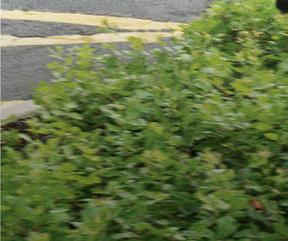
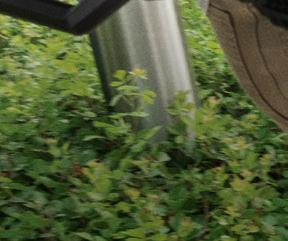

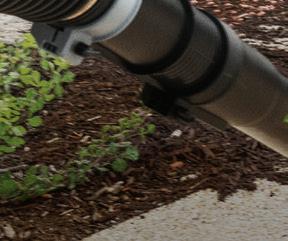


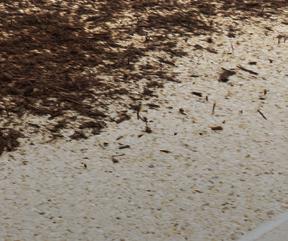









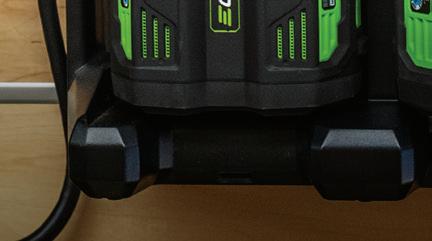
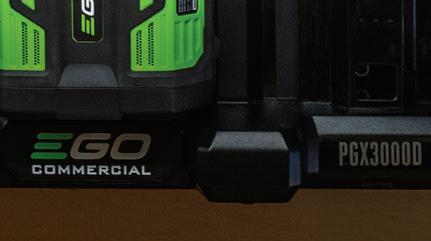
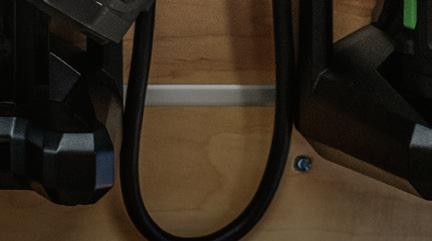



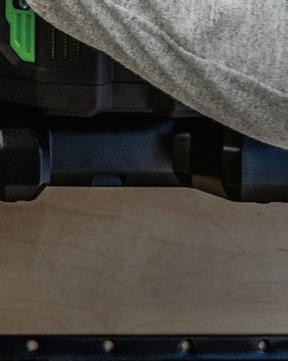

A look at the arrival and evolution of electric construction and what it means for the green industry.
Electric machine experts—including Patrik Psenak, CEO of Volteq Equipment; Darren Ashton, product manager, compact equipment, Volvo Construction Equipment; Lee Tice, product manager at JCB; and Brady Lewis, product manager, emerging products and technology, Case Construction Equipment—dive into the nitty gritty about the benefits, challenges, applications and more.
Green Industry Pros: In what applications are electric machines suitable for?
Ashton: It’s a good solution for indoor work where fumes are a concern. We’ve even seen it work for small businesses like wineries, ski resorts and zoos. Busy or populated areas are more acceptable workplaces for electric machines because of the zero emissions and low noise. A lot of turf and landscape work is well suited for electric compact equipment because you take the machines “home” each day and can charge that way. This type of work is also pretty stop-and-go in terms of needing the bigger equipment, so a charge will last longer than in some other applications.
Green Industry Pros: What are the benefits of using electric machines?
Psenak: Reduced operating and maintenance costs of electric machines are significantly decreasing the total cost of ownership over time, making them a compelling investment. Additionally, with features like minimized vibration, zero emissions, lower noise and remote control, operators can work more safely and efficiently.

Implementing electric equipment is a brand message to which homeowners and commercial customers may respond favorably.
Tice: Because electric power is instantaneous, many customers report that the controls feel quicker, more responsive and more precise. For contractors, it can make a lot of sense from a marketing perspective to run at least some battery-electric, zero-emissions equipment. That sends a clear message that you care about the environment. It’s a competitive advantage and brand message that homeowners and commercial customers will respond favorably to now and in the future.
Lewis: Without engines or exhaust systems to maintain, electric equipment has less downtime and costs associated with maintenance.
Ashton: Users are less fatigued at the end of the day. Lower noise levels also mean workers can easily talk to each other while the machine is running, which improves productivity and safety. Another perk is that electric machines do not idle. When the operator pauses, the machine turns off, saving battery life and hours accumulated on the machine. And, of course, you’re saving money by not needing fuel. You may also be able to leverage tax incentives and grants that promote eco-friendly practices. And, many manufacturers are offering flexibility in how to acquire these machines.
Psenak: One of the primary concerns surrounding batterypowered equipment is the fear of battery degradation and the associated replacement costs. However, commercial lithium batteries in construction equipment are built to last, with ratings of 2,000-3,000 charging cycles. This translates to over 12 years of battery life under normal usage conditions.
Lewis: The technology for off-grid charging at remote jobsites is still in its infancy and has a lot of maturing to do, which is something we expect to improve in the future. There are still some jobs and worksites that aren’t practical for electric vehicles yet.
Tice: If you have a single job or a temporary need for these capabilities, you can rent these machines at most of the
national rental outlets. If you think you’ll use one on a regular basis and want to buy one, just run the numbers like you would any piece of equipment. A battery electric machine may cost 30% to 40% more than the diesel equivalent, but don’t forget to factor in in the savings you get from not having to supply diesel fuel and the time and cost of diesel engine maintenance. When you combine those operating costs with your costs for labor, insurance, overhead, etc., and break it down into an hourly rate, you might find that the difference is not all that great.
Lewis: Take a hard look at your application(s) and how you use/would use the equipment. If your actual energy needs align with the capabilities of electric equipment, there are a whole host of additional advantages you could benefit from. Also, there are a lot of misconceptions out there about electric
and how much energy machines really need. Find a trusted source of information, like your local dealer, and educate yourself. If you’re unsure if electric will work for you, look at rental options or a demo.

Landscape contractors should consider their jobsites and the available infrastructure before deciding to move ahead with electric construction equipment. Volvo
Ashton: If the hesitation has to do with cost, I encourage you to look beyond the sticker price because the total cost of ownership helps make up for that. Lower maintenance costs and fewer operating hours mean reduced wear and tear and preservation of residual value. Plus, there’s the value of being able to do work you couldn’t






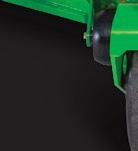
do before if noise or emissions were a problem. If charging or battery capacity are your concerns, just know that they’re probably better than you think and will continue improving for quite some time. And, if the performance part is holding you back, I really encourage you to get in a machine and try it.
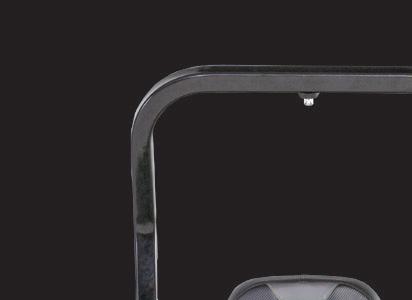

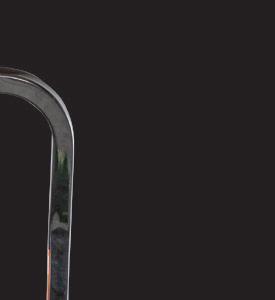











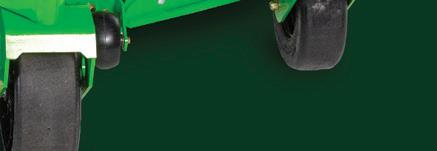






An inside look into how one company has attained success in its recruitment and retention efforts.
Is 500-plus full-time associates in 37 years an accident? The growth at Ryan Lawn & Tree has been built around recruiting special people to do special jobs. Every job should be special.
Something I learned 40 years ago was if you want good people, recruiting needs to be your No. 1 priority. The second lesson I learned is you recruit the best people when you don’t need anyone because you subconsciously lower your standards for hiring when you need someone. The more a landscape company needs someone, the lower the standards go. This is why great companies recruit 12 months a year.
How do you recruit higher-quality people? It starts with offering candidates great jobs. We can’t just say our careers are great. We have to make the career great. Will the company owner jump in and help on the job and enjoy doing the work with the person or team? Your staff will know when you are real or acting. To make the careers you offer
special, get rid of those things that you can that make a job less than satisfying. Sometimes it’s as simple as fixing or replacing equipment that doesn’t work. Just as you have unique strengths, your staff will also excel in certain jobs over others. Find people who have the talents that match the job. If you can do this in the interview process, great. We find it sometimes takes longer to find a person’s strengths. Our company has implemented an apprentice program to let new hires rotate through departments, helping us match the new hire and the department/job where they excel.
I’ve always used the search component of the internet but job boards have changed over time. Today we use Indeed mostly. With any job posting, we work at wording our job description carefully. We try to screen out people who don’t match what we are looking for. It might be as simple as stating the job is a lot of hard work. People who don’t want to work hard will say “no thanks.” That’s one less person to interview. We also hit college fairs, but they

seem to work best if we have a relationship with the college. Referral programs have yielded some excellent employees. We do remind our staff that since we are employee owned, only refer friends who will improve our organization.
At Ryan, we are very selective in who we hire, and we continue to get better at the process. When your company achieves excellence and an excellent reputation, recruiting gets a lot easier. This should be your goal.
There are tools for identifying the strengths of our staff that our company has used over the years. They include Gallup, Wonderlic, Culture Index and OAD. These tools all help profile and understand how a person thinks and behaves. We find they tend to be accurate. We don’t necessarily use them for hiring, but they are a great help in learning how to best work with our staff.
We want to build out our turf applicator to increase professionalism, and we do this in all our career positions. Step 1 was calling the turf technician a “turf manager.” We consider our turf manager to be a major driver of our company. They manage their customers and their properties.
I have learned the best marketing is done by the person wearing our company shirt. If our person has a nice appearance, is a good communicator, loves what he or she does and does the job with excellence, we can cut our marketing budget drastically.
We still have a long way to go in mastering recruiting, but learning these basic skills has helped build an above-average organization.
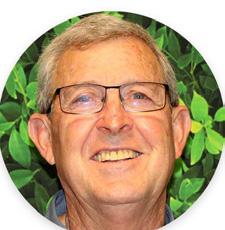 Larry Ryan President Ryan Lawn & Tree
Larry Ryan President Ryan Lawn & Tree






Milwaukee Tool is dedicated to providing innovative solutions that make professionals in the outdoor trades more productive and safer throughout their day. The outdoor equipment on our M12™, M18™ and MX FUEL™ systems are designed to withstand the demanding work of landscape maintenance, landscape construction and tree care professionals. By delivering full battery compatibility within each system, operators can easily switch the batteries between different equipment to move to the next task without any of the frustrations of gas equipment like pull starts, high noise levels, mixing gas and oil, generating emissions, and routine engine maintenance.
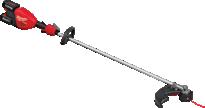
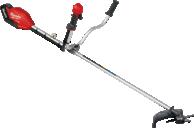
Lawn care experts discuss the top turfgrass weeds and diseases lawn care operators will combat.
The grass has greened, and lawn care operators are rising to the occasion—but so have those pesky turfgrass weeds and diseases. Here’s a roundup of the top turfgrass weeds and diseases lawn care operators may expect to see popping up in their customers’ properties.

Large crabgrass (Digitaria sanguinalis) is a summer annual weed that germinates when soil temperatures reach 55 degrees F in the spring. It is a grassy weed that grows prostrate along the ground via stolons, or creeping stems. It can be identified due to its large hairs that protrude 90 degrees to either the leaf or stem surface. Large crabgrass will have larger and smoother leaf blades compared to most turfgrass.

@ two K.stock.adobe.com
Clover is a group of weeds that is characterized by a trifoliate leaf with three leaflets. These are generally perennial plants that regrow from underground structures. The region and clover species determine the season in which the weed is most prominent. White clover (Trifolium repens) is characterized egg-shaped leaflets with a grayish watermark at the base. Black medic (Medicago lupulina L .) is characterized by egg-shaped leaflets that have an extended petiole (a stalk that attaches a leaf to a stem) on the middle leaflet. Burclover (Medicago polymorpha L.) is similar to black medic but is toothed/serrated on the leaf margins and has hooked tips on the flower.
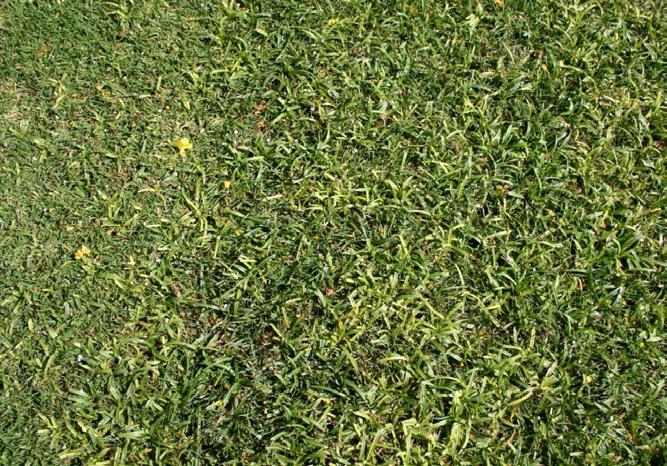
Nutsedge is another group of weeds that are commonly found in lawns and can be easily misidentified as a grasslike weed. They are characterized by having triangular stems with prominent edges. The most common sedges are yellow nutsedge, purple nutsedge and green kyllinga. These are perennial weeds that can regrow from underground structures such as rhizomes or tubers. Yellow nutsedge (Cyperus esculentus) can be identified by the yellowish seed head that it produces. Purple nutsedge (Cyperus rotundus) has a purple to maroon seed head with tiny hairs. Green kyllinga (Kyllinga brevifolia) is smaller than the other two and grows in dense mats with a terminal globelike seed head and three long triangular leaves.

Poa species weeds produce a lot of seeds, and they tend to be very diverse biologically. Because of this, seeds can germinate at many different times of the year, and, depending on the climate, many can survive summers and winters and behave like perennial
plants. These grasses are lighter in color than Kentucky bluegrass and perennial ryegrass. Poa annua can be seen in May and June due to its prolific seed head production. On the other hand, Poa trivialis rarely produces a seed head when mowed.

Dollar spot, caused by the fungus Clarireedia jacksonii, manifests as small, circular patches that resemble light tan or bleached silver dollars that may grow upward of 6 inches in diameter. If left unmanaged, these patches can merge to form larger areas of damage, leading to thin and weak turf.

Brown patch, caused by the fungus Rhizoctonia solani, is characterized by circular patches of brown or tan dead grass surrounded by a dark ring of active infection, ranging from 6
inches to several feet in diameter. It thrives in warm, humid conditions and can quickly spread in susceptible turfgrass species. Brown patch is most severe when nighttime temperatures are consistently above 70 degrees F.

Gray leaf spot, caused by the fungus Pyricularia grisea , typically affects newly established stands of grasses like tall fescue and perennial ryegrass. It presents as small, tan lesions with dark brown borders and gray centers on leaf blades. During times of high moisture or humidity, the lesions will appear gray and fuzzy from fungal sporulation.

Turfgrass rust is a fungal disease that makes the grass seem yellow or orange when viewed from far away. It produces powdery orange spores that can be transferred from leaf blades to shoes, pant legs or mowers. Rust is a disease of slow-growing turf, and newly seeded stands can be susceptible to rust infection.

Fairy ring is a circular area of abnormal turf growth, common in lawns where there are high levels of organic matter in the soil and where trees were recently removed. This disease does not attack turf directly, but rather, it breaks down organic matter in the soil, such as old roots or a stump. As the organic matter breaks down, nitrogen is released, resulting in dark green arcs or rings of thick, fast-growing grass. In some instances, the circles appear as brown or dead grass.
Follow this QR code to find out how to eradicate these diseases: https://gpros.co/84p5a92k
Follow this QR code to find out how to eradicate these weeds: https://gpros.co/yab569n5
Sources:
Nathan Nordstedt, Ph.D.
Technical services manager FMC Corp.
Andrew Osburn, Ph.D.
Ttechnical services manager FMC Corp.
Matt Giese
Technical services manager
Syngenta
Aaron Hathaway
Technical services manager
Nufarm Americas
A rundown of the pros and cons of stand-on versus ride-on mowers.
Do you stand strong for stand-on mowers? Or are you a ride-or-die fan of ride-on mowers?
The faceoff between ride-on and stand-on machines is nothing new. In a recent Monthly Musings article, Green Industry Pros surveyed readers about which type of mower they
For a stand-on mower, the operator mounts the machine via a platform and stands while operating the mower.
Applications:
• Hillsides: Stand-on machines provide greater hillside stability.
• Softer surfaces: The smaller weight and footprint of stand-on machines allow them to more easily access wet, muddy or sandier surfaces.
• Small yards: The smaller width and versatility of stand-ons allow them to more easily move around residential properties, especially those that require a lot of trimming and detail work.
Advantages:
• Good sightlines: Operators can easily see the corners of the machine and the edges of the deck while cutting around obstacles
• Smaller size: The smaller size of the stand-on mower means it can fit easily into 36-inch residential gates, and landscape professionals can fit more machines on their trailers as the operator platform folds up.
• Smaller weight: The lighter nature of the machine allows for less of a footprint and less turf disturbance. Therefore, landscape pros can service a property sooner after a rainstorm without the fear of the machine mucking up the turf.
• Maneuverability: Stand-on mowers are nimble, allowing operators to execute tight turns and maneuver around obstacles easily.
prefer, and the results varied. (Scan the QR code on p. 23 for more on those results.) To help landscape pros decide which is better for their operation, mower manufacturers provide their insight about which mower is better for each application.
• Comfort: Many operators find it more comfortable to stand on the machine rather than sit down. Bumps in the terrain are better absorbed over the operator’s full body instead of only through the lower back.
• Easy on/off: Because operators are standing rather than sitting, they can easily get on and off the machine to pick up debris or move obstacles.
• Obstacle avoidance: When encountering low-hanging objects such as tree limbs, stand-on mower operators can easily duck to avoid them.
• Less expensive: Stand-on mowers are typically less expensive compared to traditional sit-down zero-turns.
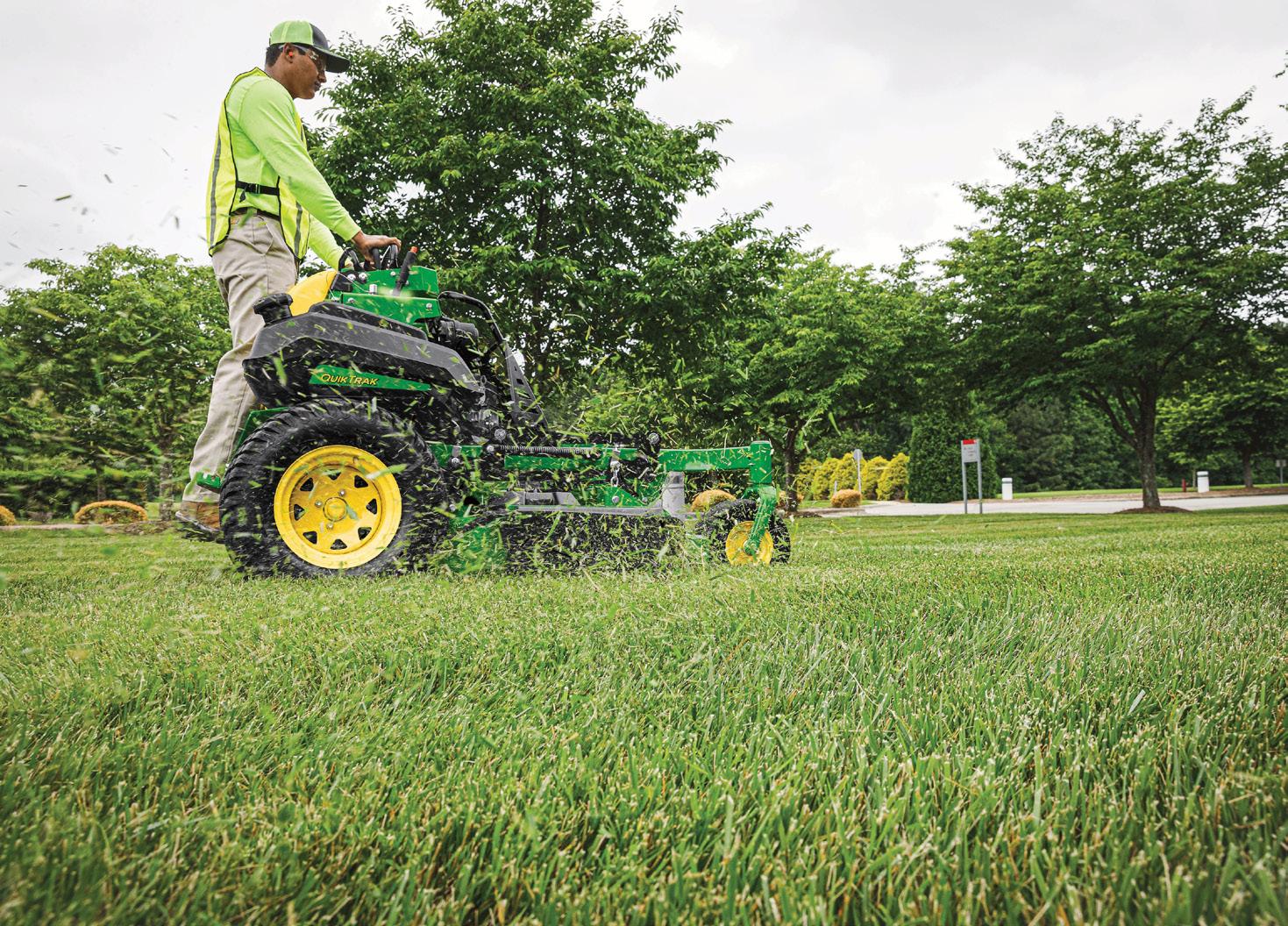
Due, in part, to their maneuverability, stand-on mowers have gained popularity in recent years.
John Deere
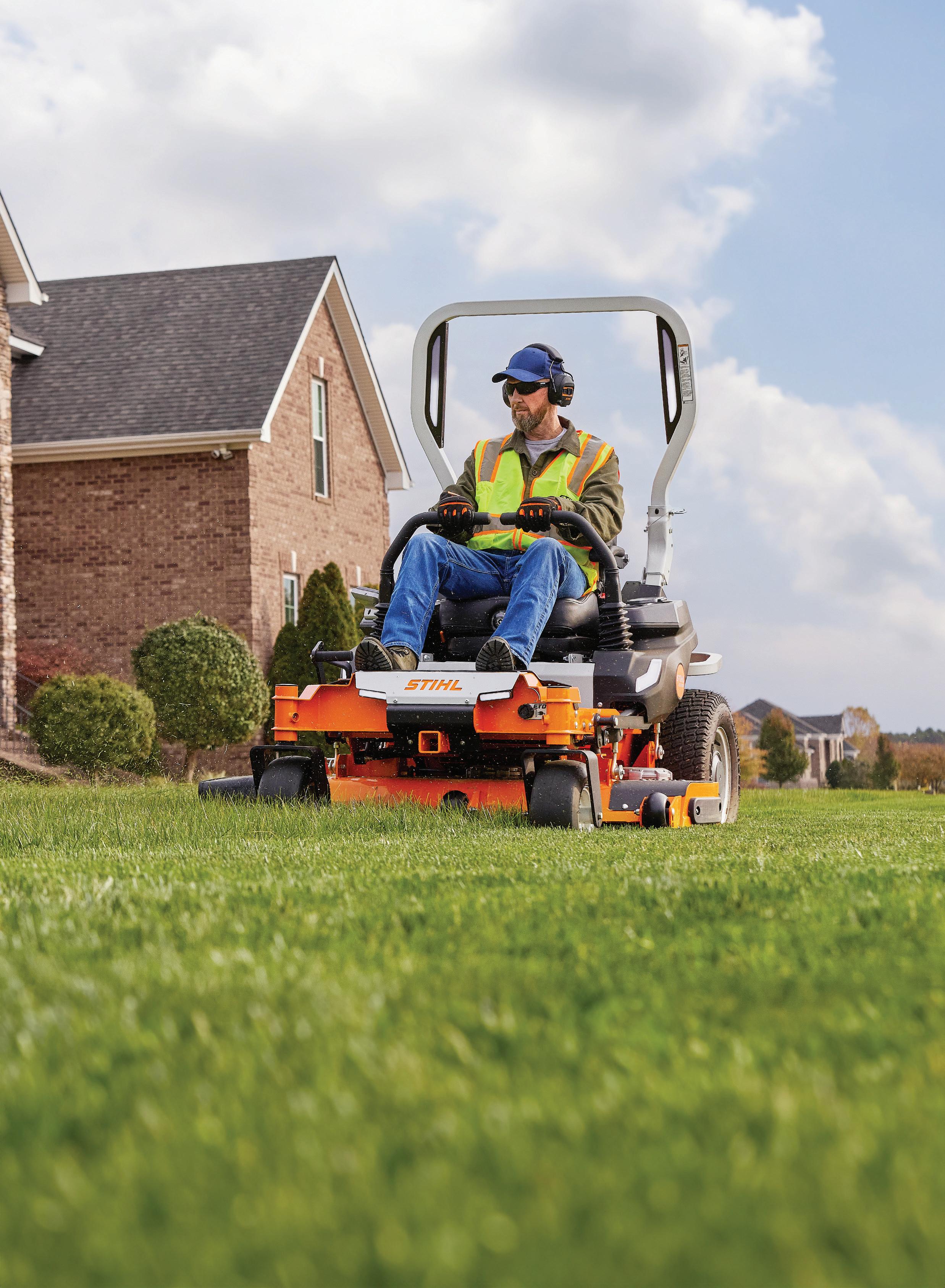
For ride-ons, operators occupy a seat to operate the machine.
Applications:
• Properties that include mowing straight lines back and forth for extended periods of time.
• Larger suburban and rural properties.
• Properties that are not broken up by landscape beds, paths, medians, etc.
Advantages:
• Large deck size: The wider deck of ride-on mowers allows operators to complete a property in fewer passes.
• Large fuel tank: Larger ride-on mowers can typically accommodate a larger fuel tank, meaning operators don’t need to refill as often.
• Efficiency: These machines cover more ground in less time, leading to increased efficiency and allowing landscaping professionals to expand their portfolio to take on larger projects without sacrificing quality.
• Serviceability: The larger machines mean maintenance teams have easier access to service items.
• Availability: Ride-ons can be more readily available with
different specification packages, allowing operators to find the right fit for their needs.
• Workhorse machine: Ride-ons feature a powerful engine and large size to help landscape pros complete properties quickly and efficiently, without sacrificing quality of cut.

Many ride-on mowers include comfort features for the operator, including cushioned seats and ergonomic controls.


Lastec flex deck zero turn mowers feature three, four, or five independently flexing decks with up to 24° of total up/down motion, patented low maintenance belt-driven decks and zero turn maneuverability. In addition to the massive 120" wide WZ1000 being one of the world’s largest flex deck zero turn mower, Lastec offers a complete range of flex deck commercial grade zero turn mowers for commercial landscapers, lawn care professionals, and golf courses. Perfect the Art of Mowing with Lastec commercial mowers.
© 2024 Lastec LLC *Prices and specifications are subject to change.
Both
• Ergonomic features: The mowers are often equipped with premium adjustable components that suit operator physique and preference, easy-to-use controls and other features that enhance the commercial mowing experience.
• Fit for commercial use. Both types of mowers are utilized by professional landscape contractors to generate revenue and maintain grounds professionally.
In the end, it comes down to what landscape pros are trying to accomplish and how each machine would best fit those needs. In fact, a well-balanced fleet may include sit-down zeroturn, stand-on and walk-behind mowers so that landscaping professionals can tackle a wide variety of applications with peak efficiency, operational flexibility, a reduction in downtime and heightened operator satisfaction.
Sources: Jon Matson, vice president of North American sales, Briggs & Stratton; Steven Benedict, product line manager, turf care, Kioti Tractor; Justin Noland, turf product manager, Kubota Tractor Corp.; Chase Tew, product systems and business unit
manager, John Deere; Jared Nuessen, senior marketing manager, Toro Co.
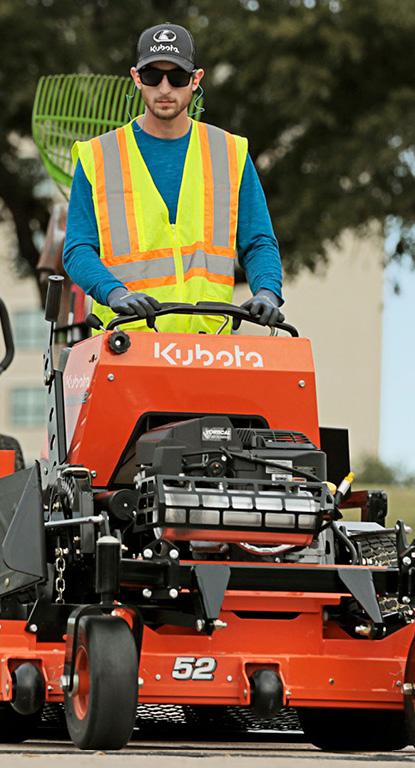



Hardscape and lighting experts weigh in on the latest trends in hardscapes and lighting.
As residential and commercial customers continue their zeal for outdoor spaces, it’s up to design-build firms to keep up their end of the deal in delivering those spaces. To help them do so, hardscape and lighting experts describe the latest trends in the space.
1. Bringing the outdoors in
Since the COVID pandemic, more homeowners are looking to create outdoor areas that serve multiple purposes, enabling them to maximize the way they enjoy and utilize every inch of their yard, says Aaron Brundage, director of operations at System Pavers.
“Whether it’s expanding their living space with an outdoor kitchen or building a pergola that doubles as an outdoor dining area, this trend hits on the need for more versatile home environments,” Brundage says. “The desire for multipurpose outdoor areas has been on the rise as more people work remotely and want to invest in upgrading their home and surroundings.”
Joe Raboine, vice president of design, Oldcastle APG, agrees that customers are continuing to seek outdoor spaces.
“Most of us are stuck indoors most of the day, and it’s important we try to find ways to maximize our time outdoors, as it is beneficial for both mental and physical well-being,” Raboine says. “People will look for creative ways to use their space, such as outdoor exercise or work areas.”
A few other examples of these multifaceted living spaces
include fire pits and outdoor kitchens.
With people spending more time at home, homeowners are ranking privacy as a top priority.
“The incorporation of products like pergolas, screen panels and other privacy structures can shield outdoor spaces from neighborhood or roadway views, allowing for more comfort,” Raboine says.
2. Porcelain pavers
As the prices of porcelain have decreased, their demand has increased, according to Travis Smith, sales coordinator for Heritage Landscape Supply Group.
“Porcelain has proven to be the most durable product available in hardscapes from stain resistance, breaking strength, compressive psi loads and more with the testing to prove it,” Smith says. “The presumption in the past was that porcelain was expensive, but these days, it comes in at less than most high-end pavers. Technology gives us the ability to create any look or color from any corner of the world at an affordable price.”
Additionally, Smith says

that manufacturers have refined the installation process and that porcelain pavers allow for continuity of a surface indoors and outdoors.
“When porcelain pavers first showed up, we told everyone to install them like concrete pavers, and that was a half-truth. Now, with plastic grid systems and a better understanding of what aggregates should be used, we can stand behind our industry specs with confidence,” Smith says. “Also, installation over concrete has changed drastically with a ton of new products geared toward the hardscaper and not necessarily the tile setter.”
3. Natural biophilic earth tones
Another trend stemming from 2020 is the use of earth tones within the design, according to Beth McBride, business development, Heritage Landscape Supply Group.
“A lot of this stemmed from the pandemic when people were spending more time outside,” McBride says.
She adds that many people are going for a more timeless look.
“They’re doing (renovations) one piece at a time,” McBride says.
4. Sustainable materials
Going hand in hand with biophilic design, the hardscaping industry has also experienced a shift toward using sustainable and eco-friendly materials.
“This is particularly true when it comes to decking,” Brundage says. “Homeowners are opting for composite
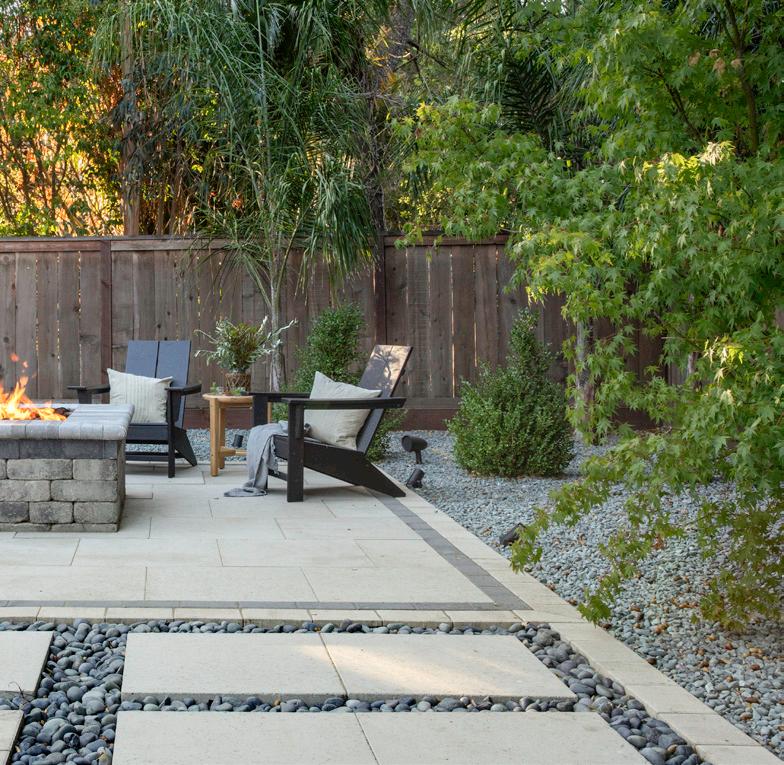
Items such as fire pits allow homeowners to take advantage of their outdoor living areas. System Pavers
decking, which is sustainably made of recycled materials while being incredibly durable and easy to maintain.”
5. Cool-toned, textured pavers
Opposing the earth tones trend, cooltoned colors have also seen a surge in popularity, with homeowners opting for pavers in varying gray tones that work

















well with modern designs, according to Raboine.
“Texture is also important, as it provides more depth and dimension to a design,” Raboine says. “Textured pavers can really elevate an outdoor space and allow designers and homeowners to play with different tones and materials.”









Things like your results, your reputation, and your livelihood. Visit your local authorized Kawasaki Engines dealer and get to know the value behind every benefit they provide.


6. “Nontraditional” landscapes
Looking ahead, customers may also want to create landscaped areas in spaces that they didn’t previously exist, Smith says.
“In the future, we’ll see vertical landscapes in cityscapes and even up houses,” Smith says. “This will increase the amount of available hardscape space.”
Raboine adds that the trend of microscapes will also continue, as people in larger cities or with smaller lot sizes find ways to create an outdoor space.
1. App-controlled lighting
In the lighting sector, more homeowners are requesting appcontrolled lighting, where they can control zoning, dimming, kelvin adjustment and custom scene creation for holidays and events, says Jim Frederick, key account manager, Tru-Scapes.
“What was a specialty item just two years ago has become a No. 1 request,” Frederick says.
He adds that zoning allows for “layering” within the design, allowing a backyard lighting system to be adjusted for many moods with multiple zones of light. Kelvin adjustment from warm to cool light allows for fine-tuning to best accentuate key features in the outdoor space.
“Before this option, we had to install unique fixtures for




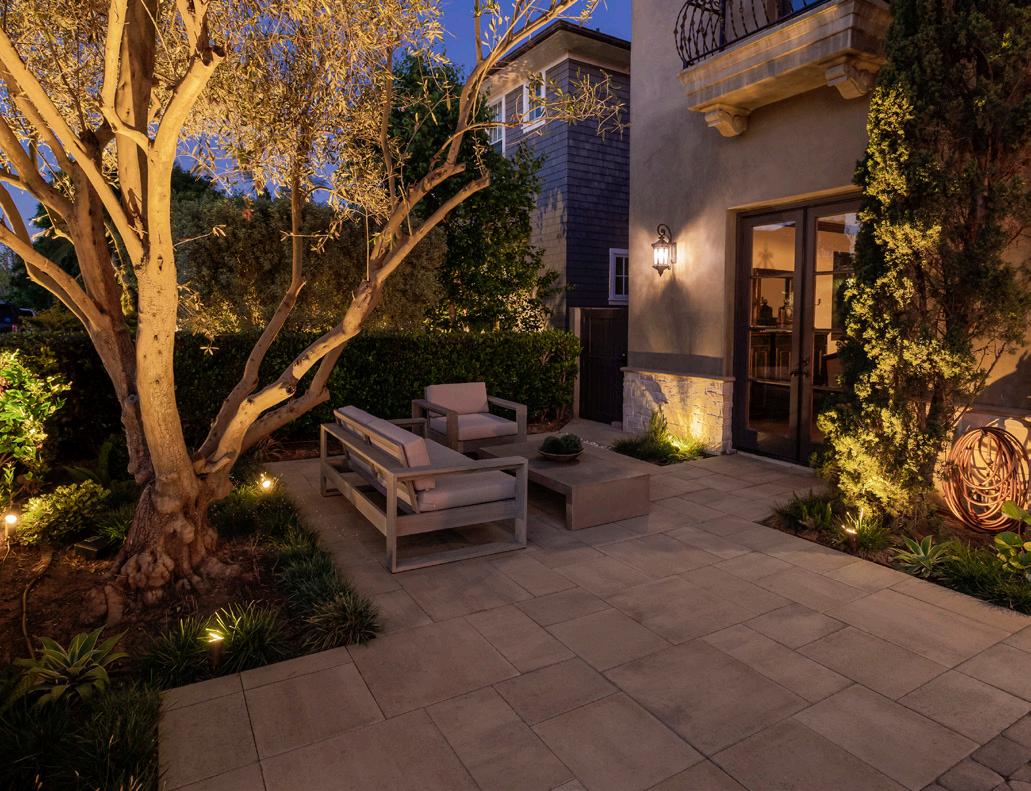
LED lighting helps to reduce expenses and live more sustainably System Pavers
lamps; now we can utilize a much smaller library of lamps and adjust as we see fit,” Frederick says. “All of this control can be done with handheld devices.”
2. LED technology
Similar to hardscape eco-friendly trends, LED lighting allows homeowners to reduce expenses and live more sustainably.
“Recent advancements in technology mean LED lighting has evolved to have improved energy efficiency and a wider range of color options,” Brundage says. “Many people now use LED lights to highlight hardscape features, illuminate pathways, increase after-dark safety and add ambiance. The energy efficiency of LED lighting is a major reason for its increase in popularity as it can provide substantial cost savings in utilities over time.”
Rick McNabb, manager of lighting and specialty products, Heritage Landscape Group, Region South, adds that LED transformers that are “zone-able” make it easier for lighting pros to install customized lighting systems.
Other forms of lighting have also gained popularity, such as wash lights and mini lights, McNabb says.
“Placing wash lights 8 inches from the house underneath windows eliminates the vertical striping of light going up the exterior wall,” McNabb says. “Mini lights under windows are also a good choice because the areas under windows don’t need as many lumens. Mini lights have an appealing design and are easy to conceal.”
Another popular trend, Brundage says, is called moonlighting, which involves placing lights high up in trees or on structures to create a soft, natural lighting effect.
“It adds depth and drama while maintaining a natural feel,” Brundage says.

In the ever-evolving world of commercial landscaping, the choice between gas and battery-powered equipment has never been more critical. As we strive for greater efficiency, sustainability and environmental responsibility, it’s essential to consider the impact our tools have on the earth and our communities. At Kress Commercial, we’re proud to champion the transition to battery-powered landscaping equipment, offering a host of benefits that go beyond mere convenience.

When it comes to environmental impact, the statistics speak for themselves. According to the California Resources Board, running a gas leaf blower for just one hour releases as much pollution into the air as driving a Toyota Camry a staggering 1,100 miles. With Kress Commercial, these harmful emissions become a thing of the past. By eliminating exhaust, Kress Commercial equipment delivers clean power. The benefits don’t stop there. With a longer lifespan compared to traditional lithium-ion batteries, Kress Commercial batteries last approximately 10 times longer than traditional Lithium-ion batteries. This means that professionals need to replace their batteries nearly 10 times less frequently, significantly reducing their environmental footprint. And with Kress’ national partnership with Call2Recycle, the largest and most reliable battery recycler in the country, you can trust that your batteries will be responsibly recycled at the end of their life, further minimizing environmental impact.
Beyond environmental considerations, Kress battery-powered equipment also brings tangible benefits to local communities. Wafting zero emissions into the environment,Kress products contribute to better air quality in your neighborhood. Say ‘goodbye’ to the fumes and odors that accompany traditional gas-powered tools and ‘hello’ to cleaner, fresher air for all. Additionally, Kress equipment operates quieter than its gas counterparts, creating a more peaceful environment. No more disruptive noise pollution drowning your serene outdoor space –with Kress, you can enjoy the tranquility of nature without the disturbance of loud machinery. Even the Kress Commercial backpack blower has a maximum decibel level at full power of 62.5dB, or roughly the same level as an air conditioner, compared with gas powered blowers that range from 75-85dB, or roughly the level of a blender or garbage disposal.
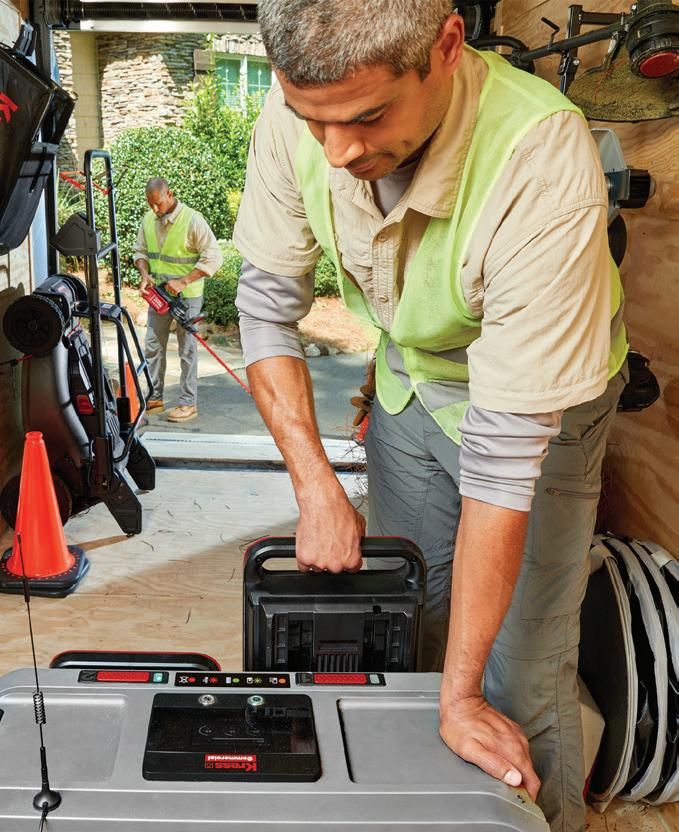

Experience the difference that Kress Commercial battery-powered landscaping equipment can make for you and your crew. Visit us at kress.com to explore our full range of products and discover why operators everywhere are choosing Kress for a safer, more efficient, and ultimately more rewarding landscaping experience. Interested in seeing for yourself? Register with your local dealer for a free 10-day trial.
Kress Commercial batteries boast more life cycles than traditional Lithium-ion batteries BY SARAH WEBBSnow equipment manufacturers provide purchasing tips to help snow pros make the best decisions when buying equipment.
Big pieces of equipment completing big pushes of snow typically involve a big upfront investment.
“Your operation is unique. You have equipment needs that are specific to your fleet, your services and your area of operation,” says Darin Gronwold, senior product specialist for Ignite Attachments. “Asking questions and working through all the nuances of your operation before purchasing isn’t just a question of immediate finances; it helps ensure long-term profitability.”
To streamline the purchasing process for snow and ice professionals, three manufacturers offer up their best advice.
Before having a conversation with a dealer or manufacturer, snow pros first need to ask themselves a few questions.
“Snow pros really should do a little bit of introspection to figure out what it is that they’re looking for, so that they can then have that conversation around what is available,” says Erin Hunt, product manager for snow control, Douglas Dynamics.
First, snow pros need to understand what vehicles or equipment they’ll be using with the plow.
“The width and height of a snow plow will be 100% dependent on what you’re putting it on, so ask the dealer or manufacturer what the options
are in terms of compatibility,” Hunt says.
Snow professionals should also have an idea of the types of properties they’ll be plowing and the plowing conditions, Hunt adds.
“If you’re plowing an apartment complex, that’s very different needs than for a parking lot,” Hunt says. “Also, know your conditions geographically. If you tend to have very heavy snow or a lot of ice, all of those will determine which path you go to.”
Craig Sandmann, manager director for Hilltip Corp., adds that snow professionals need to have a full understanding of their operational plan.
“Are they going to be relying, for example, solely on bulk material as the main anti-icing? Or preventive? Or are they going to use it in combination with liquids? Or is the dependence going to be predominantly on liquid antiicing agents?” Sandmann asks. “What variety of material can a spreader handle? What type of conveyance system works best for those materials? What liquids are the pumps and filtration systems going to be able to handle?”
Additionally, Gronwold says snow professionals should check to be sure that the equipment is durable.
“Snow is heavy. Salt and other de-icers can be very corrosive,” Gronwold says. “Look for

Snow professionals should look to their peers for recommendations on what equipment has worked well. Western Products
models with a reinforced frame that can withstand the weight of heavy snow as well as any impacts it might encounter. Finding equipment that is well built yet cost effective allows you to focus on your operation.”
Other questions to ask, Gronwold says, include:
• Are there any challenges or special considerations that will need to be accommodated? For example, will you be operating on delicate surfaces such as turf?
• What is your budget?
• Will the manufacturer make a good partner today and in the future?
• How easy is it to get in touch with the manufacturer for service or support?
• Does the manufacturer make it easy to find solutions and resources? Are they responsive after purchase or just until they’ve made the sale?
• How does the manufacturer’s warranty program stack up to others in the

industry?
• What does the manufacturer’s distribution look like? Are you able to get the attachments you need quickly or is there a backlog?
• Does the manufacturer have a reputation for quality products?
• What are other owners/operators
saying about the durability or dependability of their products?
While the snow business really is a 365-day endeavor, Hunt says April through August is when a lot of contractors purchase equipment.

Snow removal professionals rely on their equipment to be ready when they’re needed. That’s why the leading contractors trust the durability and quality of the only wear parts backed by a satisfaction guarantee. Have confidence in your equipment all season with Winter Equipment.
“That way, they can get it installed on their vehicle or piece of equipment in early fall, and they’re ready to go when the snow starts falling,” Hunt says.
Sandmann notes that in late spring and early summer, many manufacturers feature incentive programs that give dealers the best financial incentive to purchase equipment for stock for the coming season. Often, dealers can pass those savings on to their customers.
“It’s also the best time to buy because a lot of contractors are trying to renew contracts for the upcoming season, which may change the operational plan perspective of the business,” Sandmann says. “If you’re purchasing the equipment in late spring/early summer, that gives you time to onboard the equipment, train on the equipment and implement it into your overall operational plan.”
No matter the time snow pros purchase equipment, Gronwold says that the best time is before they actually need it.
“Understand your manufacturer’s distribution process to ensure equipment delivery ahead of winter weather,” Gronwold says. “It’s better to be prepared before the snow starts falling.”
Other recommendations
All other items considered, Gronwold, Hunt and Sandmann provide a few other pieces of



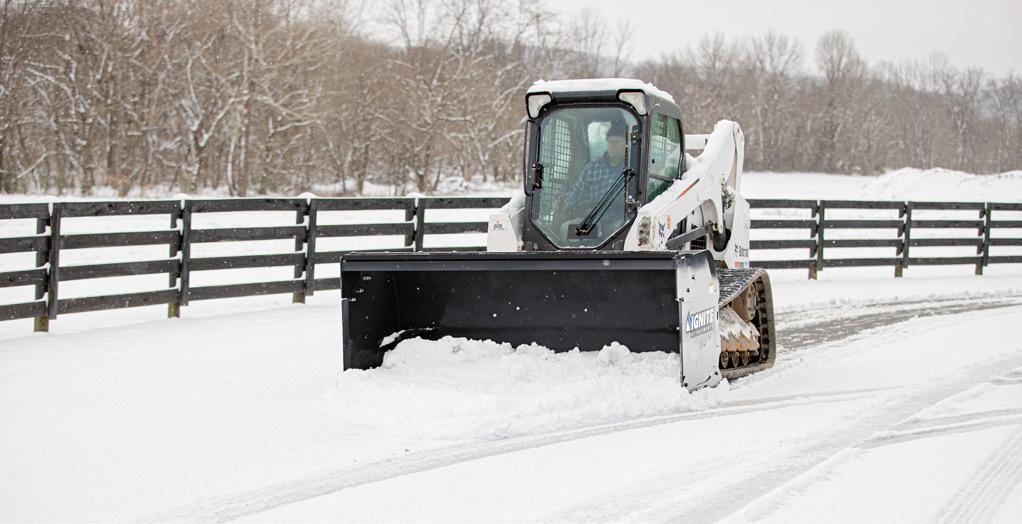
Snow professionals need to understand what type of equipment they’ll be using with the plow they intend to purchase.
Ignite Attachments
recommendations about purchasing:
• Talk to people (both in person and through forums). Snow pros will find it most helpful to ask their peers and start building up their network.
• Most manufacturers’ websites incorporate a wealth of information. Read the available information and watch informational videos.
• Understand an area’s “hot button issues,” whether it’s liability insurance for slip and fall or environmental legislation.
• Environmental issues are becoming more important to customers, so in order to manage material usage, snow care operators must measure it. Often, technology is the most effective and accurate way to do so.
Snow professionals should remember that trade shows such as the Snow and Ice Symposium (SIMA) and Equip Expo offer the opportunity to speak with many manufacturers under one roof.
“You have the ability to speak with the engineers who are developing the product and the sales team who can help you understand pricing and budgets,” Hunt says. “It’s easy to compare all the options in a one-stop shop.”
Sandmann adds that those purchasing decisions all occur against the backdrop of the education sessions.
“Those can also help educate professionals as to the latest techniques and strategies on how best to tackle their winter operations,” Sandmann says.
Finally, Gronwold says that trade shows are a unique opportunity to connect directly with product experts and get answers to real-world questions.
“Walking a show can usually eliminate hours of research time since you can basically compare all your options side by side,” Gronwold says. “No driving all over town. No long email chains as you try to get in contact with the right person to answer your question.”

The story of how one landscape firm created an abundant backyard oasis for its client.
When Hogue Landscape Service’s client originally met with a landscape architect from a different company, Carl Walsh, landscape consultant at Hogue Landscape Services, could tell she was not on board with the plan.
After a series of back-and-forth questions and discussing examples, the client decided she wanted the property to evoke scenes from the jungle.
“The landscapes were really simple. They had what we call monkeygrass and crepe myrtles and maybe a boulder, but it was all very simple,” Walsh says.
To start, Walsh suggested moving existing plant material to other locations to help fill in, before enhancing and adding. Because the client thought some of the beds were too busy, Hogue also transitioned some of those beds to regular lawn areas. The only area of the property that can’t be described as “free form” involves two rows of 15-gallon hedges that create a very uniform and structured house and a row of azaleas along the house.
“She has a beautiful brick and iron fence going across the front of her property, and on the inside of the fence was a hedgerow and on the outside of the fence was just plain,” Walsh says. “We installed full-to-theground Eagleston Hollies on the inside and on the outside. She wanted it to be very private.”
From there, Hogue ripped out a synthetic turf and gravel area where a trampoline had been from previous owners and started bringing in trees and shrubs that looked like they’d been there for 20 years and planted nearly 2,000 to 3,000 gallons of monkeygrass.
“There were areas that were already full, and the
horticulturalist in me thought it wasn’t a great idea, but it gave her the instant gratification look,” Walsh says.
However, perhaps the biggest challenge was trying to figure out how to fit trees (5-foot-diameter ball and burlap trees) through a 3.5-foot gate and parking the truck and trailer around a 45-degree bend.
While Walsh jokes that he was ready to call in a helicopter if they couldn’t find a solution, a friend of his (David Marks from Environmental Design) convinced him that a crane was the way to go.
Using a crane for two days, crews lifted the trees up over the house and the neighbor’s house in order to get them into the back. Overall, the company incorporated large magnolias, redbuds and around 150 bamboos, ranging from 35 to 60 gallons in size, in addition to about 12 tons of boulders.
The entire project took place over a year-and-a-half, with no more than five crew members on-site at a time performing close to $2 million of work. In addition to the crane and forklift, crews used a Bobcat Dingo to get the bamboo situated in the corners, but everything else was done by wheelbarrow and tree dolly.
For other landscape companies completing projects of this scale, Walsh recommends they keep the client involved as much as possible.
“It’s good to get as much information out of the client as possible, but you also have to be able to educate your client (on what will and will not work) but still give them the look they’re going after,” Walsh says. “I’ve had the opportunity to be around people who want to create things that are different, asking me to create something that’s not cookie cutter. You get to the point where you realize each client is different.”


Milwaukee Tool’s MX Fuel Portable Battery Extension connects to MX Fuel equipment. The battery extension is designed to remove the weight of the MX Fuel battery pack to deliver up to 45% lighter weight and less fatigue on handheld equipment, according to the company. The MX Fuel Portable Battery Extension can be worn as a backpack for easy transport or placed on the ground while using handheld MX Fuel equipment. The MX Fuel Portable Battery Extension maintains peak performance with all MX Fuel equipment and is compatible with all MX Fuel batteries. It will be available in Q2 of 2024.
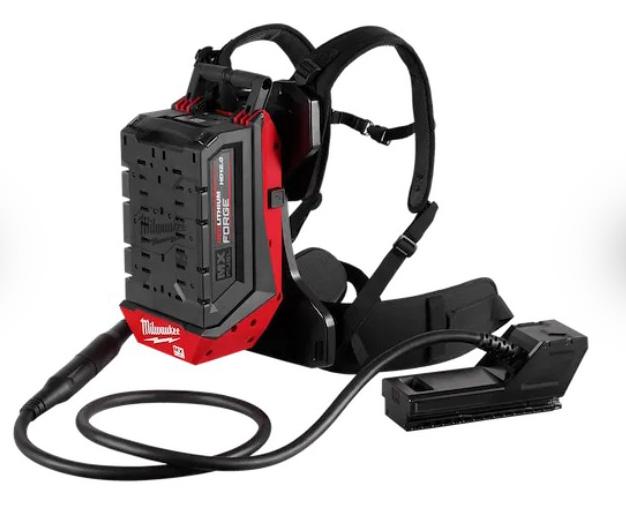

https://gpros.co/tt7ya8zb

WAC’s Colorscaping smart landscape lighting and control system is engineered to illuminate landscapes with tunable white light and an unlimited color palette. Features of the system include:
• Using RGBWW technology, Colorscaping will make the landscape pop with pure white light ranging from warm 2700K to cool 6500 Kelvin.
• New and existing landscape fixtures are installed quickly using the innovative Smart Transformer Control Panel.
• Offered with 150-watt and 300-watt capacities, the smart transformer enables robust wiring, a shielded ethernet cable and a surge protector against power surges and voltage spikes.
• The transformer eliminates any confusion in the field with a unique Discovery process—identifying each Colorscaping fixture and location so the luminaires can be added, changed or paired with the appropriate transformer—with the push of a button.
• Users can select custom colors or color-tune white light.
• Seamless control of Colorscaping fixtures is at users’ fingertips with the user-friendly MyWAC App using smartphones, tablets and smart home devices like Google Home and Amazon Alexa. Colorscaping fixtures can be assigned to various schedules.
• The system can also be controlled by the WAC WallStation.
• DMX Control is available to integrate Colorscaping with popular control systems via the ABiCUS gateway. https://gpros.co/tc7johl2
Ego Commercial’s PGX Charging System is a flexible charging solution that scales to the needs of each business. The system is anchored by the PGX Commercial Charging 1600W Hub, which mounts in a building, van or trailer and runs off any standard 15-amp, 120-volt outlet—no expensive electrical infrastructure upgrades are required. The 1600W Hub connects to PGX Commercial Charging Three-Port Docks to charge up to 70 EGO 56V 2.5-Ah ARC Lithium batteries—or up to 15 kWh—overnight. Each PGX Commercial Charging Three-Port Dock holds up to three Ego batteries and charges them sequentially, with up to 24 docks connected to a 1600W Hub. Ego Commercial also has off-grid DC-DC charging covered with the PGX Power Bank, which uses a large format 2.2-kWh (40-Ah) High-Capacity Battery to charge smaller handheld batteries off the grid for use during the workday. Once fully charged from the 1600W Hub, each high-capacity battery can recharge more than 30 Ah of smaller Ego 56V ARC Lithium batteries in the field through the Power Bank.
https://gpros.co/6ogxs1td
Rotary Corp. is offering a complete line of professional-grade Copperhead chainsaw bars and chain, plus a variety of repair parts and accessories. Details include:

• The Copperhead brand features pro sprocket chainsaw bars and a low-profile, semichisel and skip tooth chain in cut loops or 25-foot and 100-foot reels.
• Thousands of other Copperhead chainsaw parts are available along with popular bar and chain combo kits for over 120 different chain saw models.
• Additional items include multipart assortments containing carburetors, intake gaskets, springs, standard and metric bolts, bar stud nuts and chain links plus plain and preset straps.
• Rotary also offers pro-grade filters, piston and cylinder assemblies, crankshafts, pole saw bars, repair tools, chain breakers, spur sprockets, fuel filters, overhaul kits and more. https://gpros.co/0eydu5za
Green Industry Pros: How did you get into the green industry?
Audrey Sellepack: I went to The SUNY College of Environmental Science and Forestry up in Syracuse, N.Y., where I was getting bachelor’s degree in environmental biology, but I minored in marine science. I become burned out with academia, and with Syracuse being landlocked, there weren’t many marine biology jobs. So, I decided to go the tree route instead, segueing into plant health care where I thought I could make a huge difference. I applied for a job at Davey tree and got a position as a plant heath care technician in the Rochester residential office. I was doing that for three years and really enjoyed it and then wanted to look for something more on the support side. It’s been exciting getting to help people with pesticide regulations and use my experience as a plant health care tech.
GIP: What have been some career highlights?
Sellepack: What’s really cool about my new role at The Davey Institute is that I was given a lot of flexibility. I wanted to use that to my advantage to support women in the green industry, so I created the Davey Women’s+ Group. It’s been a great way for all of the women at Davey tree to be able to connect and share stories.
GIP: What have been some of the challenges?
Sellepack: Being a woman in the green industry can be a challenge. Sometimes, you feel like the black sheep. I was the only woman who was working in the field at my office when I started. That was a struggle trying to find out where my support is, but I managed to make it work really well. I had a counterpart plant health care technician who was really great. He stepped in and helped me with whatever I needed. I had someone to lean on, even if there weren’t other women in my office who were doing my job. Now, I’ve seen so much change in the six years that I’ve been with Davey. There are so many more women working at the field level now than there used to be.
GIP: What’s your advice for other women who want to get started in the industry?
Sellepack: Find your support network. Even if they’re not women, finding people who support you is great. I also encourage people to constantly be curious and keep learning.
I try to keep building up my credentials and stay educated.
GIP: What could the industry use more of?
Sellepack: It would be great to see more communication and interaction across companies. At Davey, we definitely do a lot of things internally, but I think we could collaborate more. I think there’s plenty of work for everybody to go around. Being able to open lines of communication and sharing ideas with each other will really help us all be better.
GIP: What’re your goals moving forward?
Sellepack: I really like the sustainability field. I want to grow more in a role where I’m focusing on improving the sustainability of a company, finding ways where we can move into the future in a positive way and reduce emissions, but then also on the social side, create a positive environment for everyone to work.
GIP: What do you like to do outside of work?
Sellepack: I love to hike. I like checking out trees and diagnosing them. I feel like such a tree nerd. I also love camping. I’ve got a dog and live with my fiancé, and we enjoy going outside and taking (the dog) places, too. We participate in the western New York hiking challenge every year. It’s a list of 30 different hikes, and if you complete 20 of them, you get a sticker and a patch, and all of the money goes toward various local nonprofits dedicated to supporting the natural world, including the Buffalo Audubon Society. It’s a fun way to complete a bunch of trails and give back to the community.


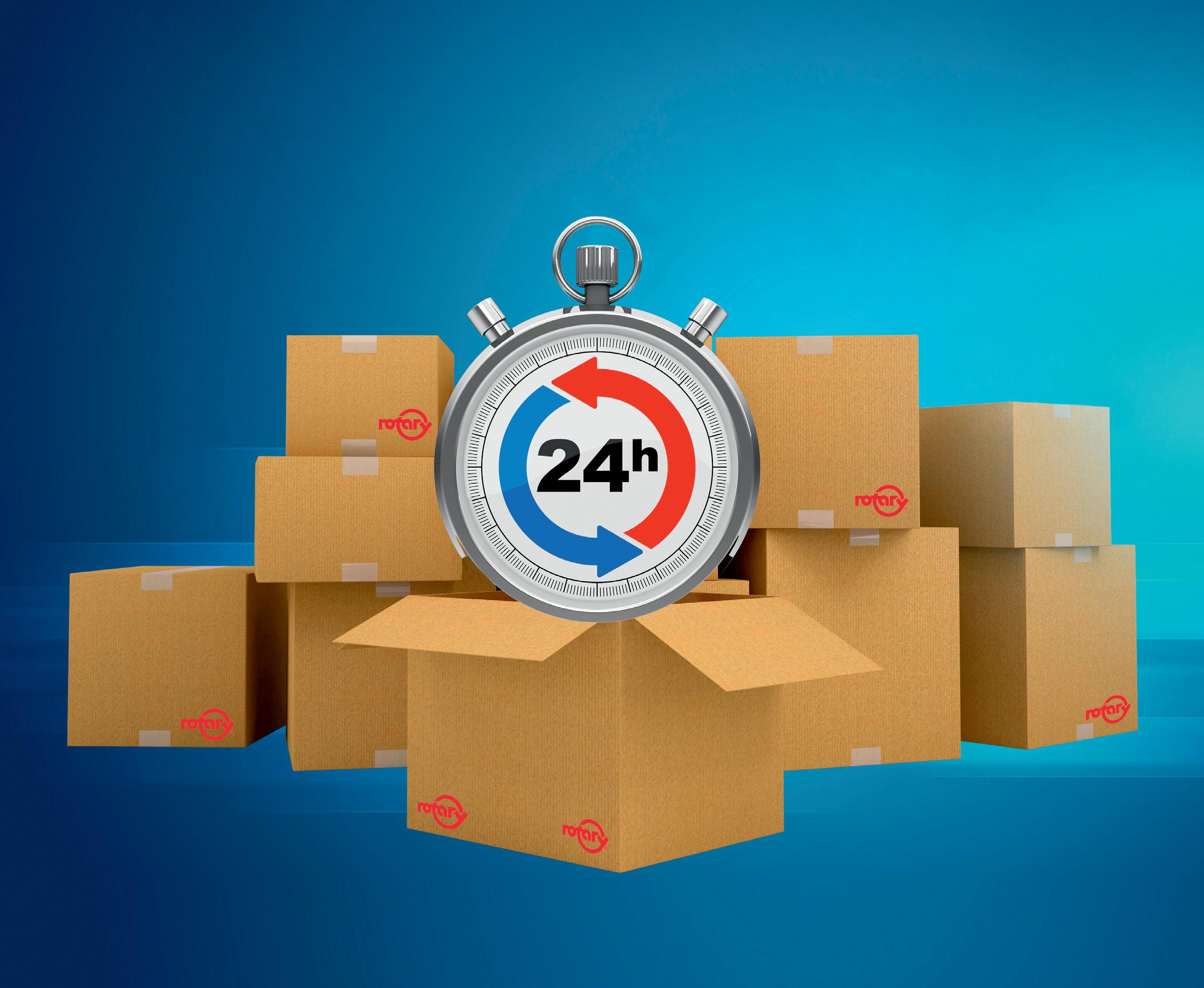
• Same day shipping on most orders received by 4 p.m. EST
• 7 major distribution centers plus alternate shipping locations
• 95% fill rate – among the industry's best
• Flexible payment options for servicing dealers
• Over 10,000 outdoor power equipment parts


